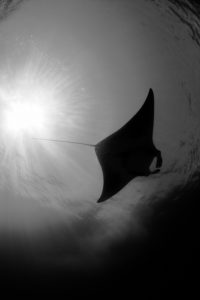Wednesday, January 31, 2018
The Journey of (Marvelous) Mrs. Maisel: Social Work Reflections on Season 1
from The New Social Worker Online — the professional social work careers magazine http://ift.tt/2nu4rVz
The Backstory - A Media Freedom Podcast
from World News Publishing Focus by WAN-IFRA - World Association of Newspapers and News Publishers http://ift.tt/2E2kTXm
Best Scuba Diving in Bunaken
North Sulawesi is home to some of Indonesia’s — if not the world’s — best wall diving. The islands that form Bunaken Marine Park drop precipitously, reaching below 2,000 feet (600 m) in some places. The best scuba diving in Bunaken features pristine hard corals, abundant reef fish, and larger pelagic species including reef sharks, eagle rays and tuna. Often simply called Bunaken, the Bunaken Marine Park consists of five islands: Manado Tua, Siladen, Mantehage, Nain and Bunaken itself. While a large volcano dominates Manado Tua’s skyline, the other four are mostly flat and surrounded by large fringing reef plates. Mangrove forests protect many of the islands’ sandy beaches, which means there’s little erosion and a tranquil atmosphere even on wavy days.
Scuba diving in Bunaken
The dive sites around the islands are slopes, walls or sloping walls. Briefings instruct divers to descend to a set maximum depth before going ‘reef left’ or ‘reef right,’ depending on the current. Not all of the drops are sheer, though, and a number of flat, sandy areas make this a great training ground for new divers, too.
Traditionally, the islanders here were fishermen. Recently, however, dive resorts and homestays have provided more employment options. Many area dive guides are from Central and South Sulawesi. The park offers plenty of dive sites to choose from, with operators based mostly on Bunaken and Siladen. Dive centers on mainland Sulawesi also offer trips to the Marine Park.
Most resorts offer full board, and some also have small cafes or bars perfect for socializing at the end of a diving day. To check out how the locals live, it’s worth taking a stroll into the nearby villages on the islands. Here are our picks for the best scuba diving in Bunaken.
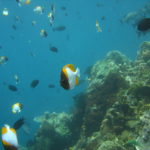
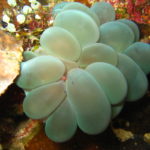
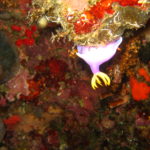
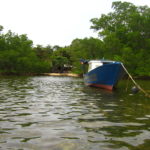
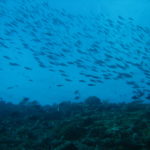

Ron’s Point
Where is it: On the southwest corner of Bunaken island, Ron’s Point is a sloping reef running out into a large plateau which varies from 114 to 130 feet (35 to 40 m).
What makes it special: Situated right on the edge of the island’s fringing reef, this is the perfect spot to see pelagic species like sharks and eagle rays pass by. Many dive guides might start and end the dive on the sloping reef while spending the best part hanging out above the plateau looking for big stuff. With luck, you might even spot a dugong in the shallow parts of the site.
Mandolin Reef
Where is it: right around the corner from Ron’s Point on the west side of Bunaken and facing the island of Manado Tua lies Mandolin Reef.
What makes it special: The water in front of the reef runs as deep as 1,900 feet (600 m) in places, which makes it another excellent place to spot sharks and tuna. Technical divers will enjoy hovering over smaller outcrops within the reef which start from about 148 feet (45 m).
Sachiko I and II
Where is it: On the east side of the island lie the slopes of Sachiko I and II. They are home to wire corals, Napoleon wrasse and plenty of a Bunaken favorite — green turtles.
What makes it special: Whether there is a bit of current on these dives or not, there is always plenty of life on the reefs. While your dive guide is checking for small stuff, it’s worth keeping an eye in the blue for larger marine life.
Lekuan II
Where is it: along the south of Bunaken island lies the vertical wall of Lekuan II.
What makes it special: The boats generally drop divers in a recess here, close to a shallow overhang which is home to juvenile reef sharks. A wall for fans of macro and large life alike, this site combines amazing amounts of life with impressive topography.
Muka Kampung
Where is it: Literally translated, Muka Kampung means “in front of the village” — that is, the main village on Bunaken island.
What makes it special: Generally, this is a gentle to moderate drift along a large sloping wall. But don’t worry, there are a few eddies along the wall, giving divers a break from the current and a chance to look for smaller species such as ornate ghost pipefish.
Pangalingan
Where is it: On the south side of Manado Tua island, Pangalingan is for fans of adrenaline diving.
What makes it special: This current-swept dive site offers a chance to see schooling snappers, fusiliers and other reef fish while ducking and diving around the current.
Bualo
Where is it: Bualo is on the west side of Manado Tua.
What makes it special: More relaxed than Pangalingan, this dive site features a few great overhangs and offers great chances of spotting pelagics as well as small stuff.
Siladen Wall
Where is it: On the southwest side of the smallest of the marine parks’ islands, lies this site named after its island.
What makes it special: Siladen is another site where you have a great chance to see small and big stuff alike. A gentle current usually pushes divers along this wall and with characteristic good visibility, this can really give you a panorama-dive feel.
Barracuda Point
Where is it: Barracuda Point is on the west side of Mantehage, the large island to the north of Bunaken.
What makes it special: The clue is in the name – this is one of the best spots to encounter schooling barracuda, midnight snappers and other species. It’s worth the one-hour-plus boat ride from Bunaken or Siladen.
Manado Wreck
Where is it: The Manado wreck lies in 79 to 130 feet (24 to 40 m) just outside the marine park and off the coast of North Sulawesi to the east of the city of Manado.
What makes it special: A bit of mystery surrounds this wreck, as almost nothing is known about it apart from it having sunk during World War II. About 160 to 200 feet (50 to 60 m) long, the wreck still has intact propellers at 130 feet (40 m) and a few penetration opportunities in shallower parts. It also features a lot of natural coral growth and is a great spot for pipefish and blue dragon nudibranchs.
The post Best Scuba Diving in Bunaken appeared first on Scuba Diver Life.
from Scuba Diver Life http://ift.tt/2nuoq6G
Swiss daily Blick honours 'King Roger' with special issue
from World News Publishing Focus by WAN-IFRA - World Association of Newspapers and News Publishers http://ift.tt/2npVCwI
Tuesday, January 30, 2018
German initiative brings refugee reporters into local journalism
from World News Publishing Focus by WAN-IFRA - World Association of Newspapers and News Publishers http://ift.tt/2nrUQP5
Sweet Tips for Valentine's Day Merchandising

Inspiration images via Pinterest
Valentine's Day has become a retail giant. The day of love is a beauty businesses dream, the perfect time for selling Valentine's Day services as well as promoting products and services as gifts. With some love and creativity you can create a salon experience that guests won’t find elsewhere.
Valentine Mirror Messages
When done properly, your salon logo can appear on client selfies, almost like an automatic watermark! It's no secret that guests love to photograph themselves after a salon visit - when they are feeling beautiful. Affix Valentine's Day messages like XOXO, SMOOCH, LOVEor graphics like HEARTS, LIPS, CUPIDS with your salon logo and hashtag to each station mirror - or a frequently visited mirror - this encourages clients to take a photograph and post it (fingers crossed)!
Valentine's Day Themed Selfie Station
Add a Valentine's Day themed Selfie Station in your salon to play up the holiday. What is a Selfie Station you ask? It is a cool staged place or space in your salon specifically designated for clients to take selfies of their fabulous new do’s and doll ups.
A Valentine's Day selfie station can be as simple as a red heart on a white backdrop – just make sure you include your logo and hashtag. Or, get creative! Create the shape of a heart from pink or red objects, hang strands of heart shaped garland from an umbrella, adorn your wall with heart shaped paper plates, or cut out lips. Add in fun selfie sticks with lips, hearts or xoxo. The ideas are endless...
Branded Merchandising Look
Determine a Valentines "look" for your beauty business and express it by choosing decorations and retail products that tell a story in your special branded way. Theme everything to the "story" – color choices, merchandising support elements, point of purchase signs, seasonal merchandise offerings – should all further visually support the theme. Mix retail with merchandising support elements - these are the little details such as candy boxes, cards, vintage books, or trinkets that make your displays specials.
Seasonal Merchandise
Don’t limit your Valentine's Day to retail your salon normally stocks. Load up your retail space with fun Valentine's-Day-themed merchandise such as headbands, clips, sunglasses, makeup, nail lacquer, jewelry, and cute valentines day cards (perfect accompaniment to a salon gift card). These items will add to the salon experience and give your guests extra gifting options.
Point of Sale Signs
Tell your story clearly with themed point of sale signs or shelf talkers mixed into retail displays. Point of sale signs clearly state prices, products, packages, or specials you wish to highlight which both informs and encourages purchase.
Fresh Flowers
We love to use fresh flowers mixed into displays - for such a little cost, fresh small bouquets in varying mini vases filled with pink or red roses or peonies add zest to any retail display.
Branded Valentine Window Displays
Red and pink is the traditional symbol for love and Valentine's Day. A huge heart on the window, strings of hearts in varying colors, hanging vintage postcards...? Pick a theme, be bold.
Social Media Love Quotes
On February 1st begin posting branded love quotes to your social media channels, it’s a fun way to make a lasting impression.
Make your guests love struck when they visit your beauty business the month of February.

from Beauty Business Blog http://ift.tt/2nuk53s
U.K. Microbead Ban Comes into Effect
Earlier this month, the U.K. took a landmark step to help address the immense volume of plastic in our oceans and waterways. Going forward, the government has banned the manufacture of products containing microbeads. These tiny bits of plastic are in everything from soap to toothpaste. Despite their size, they do untold damage to the world’s waters and marine life. The new U.K. microbead ban will hopefully address some of this damage.
U.K. microbead ban comes into effect
The damaging microbeads wash down the drain with your face wash or hand soap. The cumulative effect means billions of pieces of tiny plastic are choking our oceans. The ban means that manufacturers cannot add the beads to any products going forward from now. The U.K has also instituted plastic-abatement measures. These include a 5p charge for plastic bags. This step has meant 9 billion plastic bags moved out of circulation, as reported by The Independent.
Environment minister Thérèse Coffey told the paper that the government would tackle other forms of plastic waste as well.
“The world’s seas and oceans are some of our most valuable natural assets, and I am determined we act now to tackle the plastic that devastates our precious marine life,” she said.
“Microbeads are entirely unnecessary when there are so many natural alternatives available. I am delighted that from today cosmetics manufacturers will no longer be able to add this harmful plastic to their rinse-off products,” she said.
The microbead ban comes as the U.K. government releases a 25-year environment plan that aims to address issues on land and in the ocean and waterways.
The post U.K. Microbead Ban Comes into Effect appeared first on Scuba Diver Life.
from Scuba Diver Life http://ift.tt/2GtWqJ7
Monday, January 29, 2018
The New Social Worker Spring 2018 Webinar Series
from The New Social Worker Online — the professional social work careers magazine http://ift.tt/2BBEmZy
What I’m reading: Vol. 94.
Happy Monday, my darlings!
I’m jetting off to Tucson today to cover the AGTA GemFair (so excited!!!!) and then I’m heading to the Original Miami Antique Show after that. I’ll be showing you all the best goodies here on the blog when I get home, but be sure to follow me on Instagram if you want the behind-the-scenes scoop.
If you miss me while I’m traveling, I have a little something for you to listen to!
Continue reading What I’m reading: Vol. 94. at Diamonds in the Library.
from Diamonds in the Library http://ift.tt/2FrdoGy
Mantas in Florida
Driving her ATV down the Florida beach while counting sea-turtle tracks, large, dark shapes swimming close to shore piqued Jessica Pate’s curiosity. After investigating, the marine biologist was shocked to discover mantas, which she didn’t think often visited Floridian waters. Even a broad online search for mantas in Florida turned up little.
As an open-water dive instructor, she knew divers didn’t commonly see mantas in the area. But she stumbled upon them often enough along the shoreline while researching sea turtles to believe these giant rays simply inhabited shallower waters while in Florida. So, she and her boyfriend rented a boat and were ecstatic to find two mantas that first day — but then none for three weeks.
Mantas regularly appear in Floridian waters
Continuing her hunt, she found more mantas, usually in shallow waters of 10 feet or less. This cleared up the mystery of why divers rarely saw them. With this data in hand, she established The Manta Ray Program for the Americas branch of the Marine Megafauna Foundation last year. Jessica has now been able to compile some surprising preliminary data working as a volunteer in her off-hours, with help from fellow manta lovers, two conservation photographers documenting the project, and a volunteer summer research assistant.
Jessica goes out on the water to further her research one to three days week. On her best day, she found seven mantas, but occasionally goes weeks without seeing any if the conditions are bad enough. Many fish migrate through Floridian waters, but she’s actually seen mantas return to the area. She documented one manta on seven separate occasions over a two-month period, and many that she and her team recorded last year have returned this year.
Humans heavily impact mantas
Researchers have seen propeller scars and missing tails. Fishing hooks and line entanglements are also common, which makes it all the more heart-wrenching to find out that mantas are likely quite intelligent since they have the largest brain-to-body ratio of all rays, sharks and skates. In the video below, a female manta named Stevie Nicks seemed to know someone was trying to help and patiently waited for an hour while Jessica worked to remove three hooks with fishing line attached. The hooks in her belly also included weights, affecting Stevie’s ability to swim.
Video courtesy of Bethany Augliere Photography
While this video has a feel-good ending, human impacts are a sad, regular occurrence. Last year, the Manta Ray Program recorded a beautiful giant ray they named Kevin who had a smooth body. This year, they took photos of a missing left wing-tip and a gash on his back so large it allowed them to see all the way into Kevin’s body cavity. They documented another gash a week later and soon thereafter found him with two attached fishing lines dragging along a plastic bag. Jessica successfully removed everything from poor Kevin and he seems to have recovered, but he may not be so lucky the next time.
In the drone footage below, viewers can see a manta with a missing left wing-tip. This indicates it could be Kevin, swimming along the Florida shoreline and then close to a pier. A fisherman clearly casts out in front of the manta three times before the ray swims back into open water. It’s not just happenstance that Jessica continues to see mantas covered in hooks and fishing line. Fishermen try to catch cobia underneath mantas and they often injure the mantas instead.
South Florida may be special
The Manta Ray Program has discovered three extraordinary phenomena in South Florida:
- The area could be a nursery for baby mantas since Jessica and other researchers often see small, immature manta rays.
- Some rare melanistic mantas, commonly called ‘black morphs,’ with their striking all-black coloring
- A dead manta found in Pompano Beach provided the program with a unique opportunity to collect a large amount of data from a particularly important specimen. Marine Megafauna Foundation founder Dr. Andrea Marshall suspects this is a potential third species of manta.
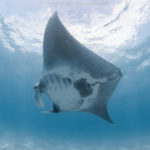
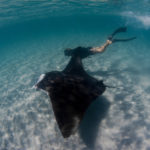
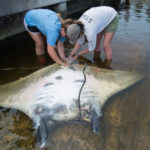
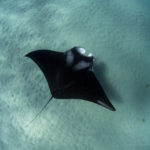
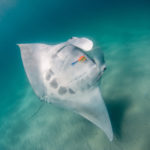
What’s next for the Florida mantas?
While it’s still a mystery why scientists have done little research on the Florida mantas before, Jessica plans to continue her volunteer manta studies part-time in the hopes that eventually funding will appear. Full-time research and tagging the mantas to track their behavior is the key to finding out more about these majestic creatures.
If you’re as thrilled as we are to know that mantas can be found in the contiguous United States and not just exotic locales, check out the Facebook page of Marine Megafauna Foundation: Americas which Jessica runs. Please visit MarineMegafaunaFoundation.org to volunteer or donate to this 501(c)(3) charity focused on saving our ocean giants, and helping marine life and humans thrive together.
The post Mantas in Florida appeared first on Scuba Diver Life.
from Scuba Diver Life http://ift.tt/2GqWR6P
Sunday, January 28, 2018
Getting Rid of Plastic in Your Life
We all know by now the danger that plastic debris poses to marine life. It’s easy to do your part to stem the seemingly unstoppable tide of plastic into our watersheds by getting rid of plastic in your life, at least as much as you are able. Reducing your reliance on plastic and the waste that you produce is as easy as changing some of your daily habits for good. Single-use plastics create a huge amount of trash every day, which is absolutely choking landfills and waterways. And although recycling is a good way to get rid of some of this waste, not using it in the first place is a far better choice.
Here we’ll look at a few different areas of your home and your life and how you can successfully get rid of plastic in your life.
Shopping and eating out
Avoid the plastic bag and carry a reusable grocery bag in your car or your purse. Many — if not all — grocery stores now sell these bags for around .99 cents. You can also buy them online, as well as foldable, reusable produce bags. If your local grocery store sells bulk products, you can also bring your own container.
When it comes to your caffeine habit, buy a reusable travel mug for your coffee (or two if you tend to forget one at the office). Again, most coffee chains sell reusable travel mugs, and you often get a discount on your coffee for bringing one in. For those of you who pack a lunch to work, drop the plastic bag for your sandwich and invest in reusable food wrappers or containers.
When having a drink at a restaurant or bar, ask for no straw. We use plastic straws for a few minutes and ditch millions of them every single day. If you really need a straw in your iced latte, you can buy a glass or metal reusable one and carry it with you.
Finally, you can carry around a reusable metal water bottle and keep it on hand to refill at drinking fountains. Many restaurants or coffee shops will be happy to refill it for free as well.
At home
Kitchen
We already mentioned your shopping bags and containers. To store your leftovers or food, ditch the plastic wrap and switch to reusable food wraps, which you can make yourself. When it comes to storage for sloppier items, switch to glass rather than plastic.
For cleaning needs, you can find a wide range of eco-friendly products at your local supermarket. But these still come in plastic bottles. It’s easy to DIY your own cleaning solutions as well — the internet is full of recipes. Also consider ditching single-use wipes and similar products, and buy good-quality dishcloths and cleaning cloths to wash and reuse.
If you absolutely must use disposable kitchenware for a big event, you can still avoid plastic and buy compostable bamboo plates and utensils. If those are too pricey for you, try to buy recyclable paper plates rather than Styrofoam.
Bathroom
The bathroom can be tough since many health and beauty products come in plastic containers, bottles and so on. The starting point is to try to buy your products in the biggest containers possible, which is also usually cheaper. Buying bigger means you’re at least sparing an extra plastic bottle.
Re-usable products such as razors and toothbrushes always have more sustainable alternative, so think about switching those. You can also choose to buy your cosmetics from brands that use as little plastic packaging as possible.
Finally, if you’ve got some time, the bathroom is a great place to try your hand at making your own beauty and hygiene products. Again, the internet is full of recipes with natural ingredients for everything from deodorant to soap to shampoo.
Rest of the house
Getting rid of the plastic is not always as easy as it sounds, but if you look for alternatives you’ll find there’s usually a more sustainable option.
Use glass (with silicone sleeves) bottles and biodegradable diapers (or cloth) for babies. When confronted with the choice to buy a plastic product — such as a mixing spoon — or a wooden or metal one, choose the alternative.
There are lots of online resources to help you take the first steps in getting rid of plastic in your life. With one small habit change at a time, we can all help reduce the amount of plastic waste we create.
The post Getting Rid of Plastic in Your Life appeared first on Scuba Diver Life.
from Scuba Diver Life http://ift.tt/2Gq4fPG
Saturday, January 27, 2018
Marine Species: Moray Eels
Moray eels are some of the ocean’s most beautiful marine creatures. They are perhaps one of the most underrated as well since divers see them so frequently. Often their gaping mouths and razor-sharp teeth give them a fearsome reputation and demeanor. But they’re rarely a threat to humans unless provoked. One of the apex predators of the reef, they feed predominantly on crustaceans, cephalopods and other fish. They can live over 30 years. Most reside in temperate and tropical seas, burrowing their way into rocks and reef. An incredible variety of morays awaits the attentive diver — here are a few of the world’s most beautiful moray eels.
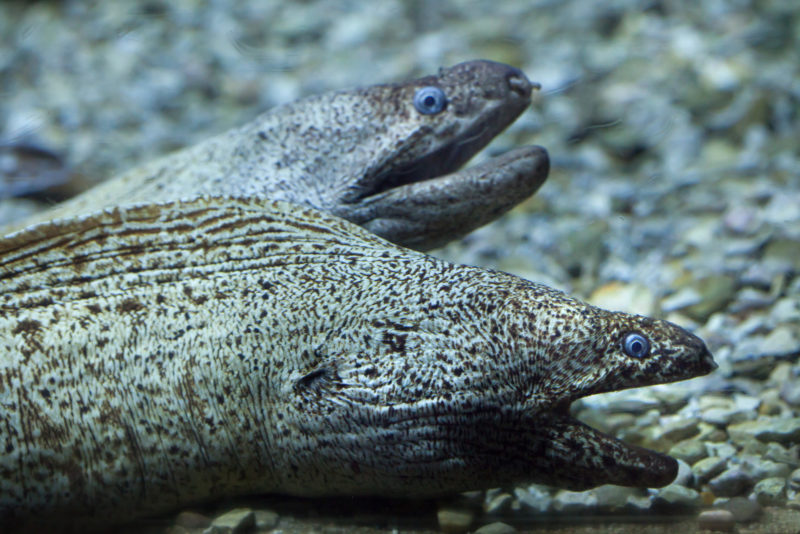
Mediterranean moray
A large moray eel, divers can find the Mediterranean moray can in its namesake sea and parts of the Atlantic Ocean. With a splendid coloration of black and yellow flecks, scientists think the Mediterranean moray spawns over 60,000 eggs from which the young hatch. Unfortunately, this species is exploited due to its beautiful skin, which can be made into leather. It’s also fished for food. Mediterranean morays can reach up to five feet (1.5 m) long.
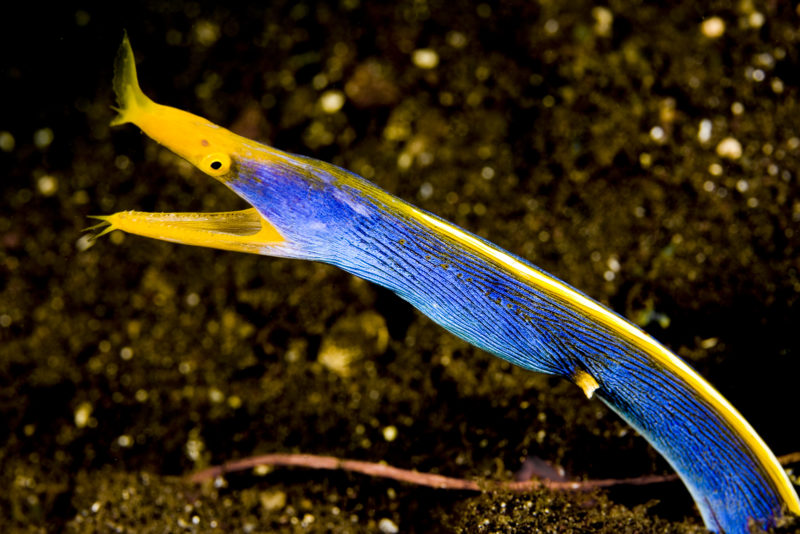
Ribbon moray
Perhaps the most eccentric of all moray eels, the ribbon eel is a thin and relatively small species of moray. Inhabiting the tropical waters of the Indo-Pacific, ribbon eels burrow into mud, sand and rock. All ribbon eels start life as males and some, over time, will become females. With a striking resemblance to a dragon, aquariums often target the ribbon eel although they rarely survive more than a month in captivity. They grow to 3.3 feet (1 m) in length and can live up to 20 years in the wild.
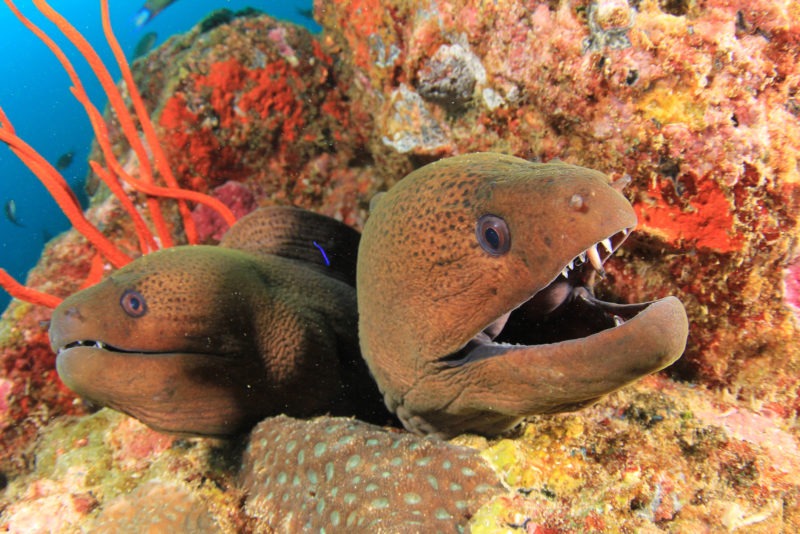
Giant moray
The largest of all moray species, the giant moray eel can reach up to 10 feet (3 m) in length and 66 pounds (30 kg) in weight. Juveniles are born predominantly brown in color, developing black spots and leopard marking on the back of the head as they age. Diverse in distribution, the giant moray is widespread in the Indo-Pacific.
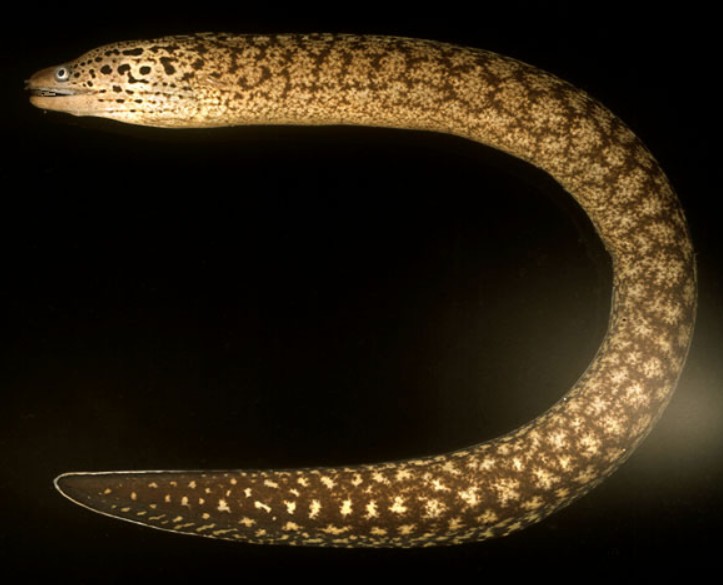
Snyder’s moray
The smallest of all morays, scientists discovered this species in 1904. It is prevalent in the Pacific Ocean. Known also as the fine-spotted moray, the Snyder’s moray can reach sizes of up to 4.3 inches (11 cm).
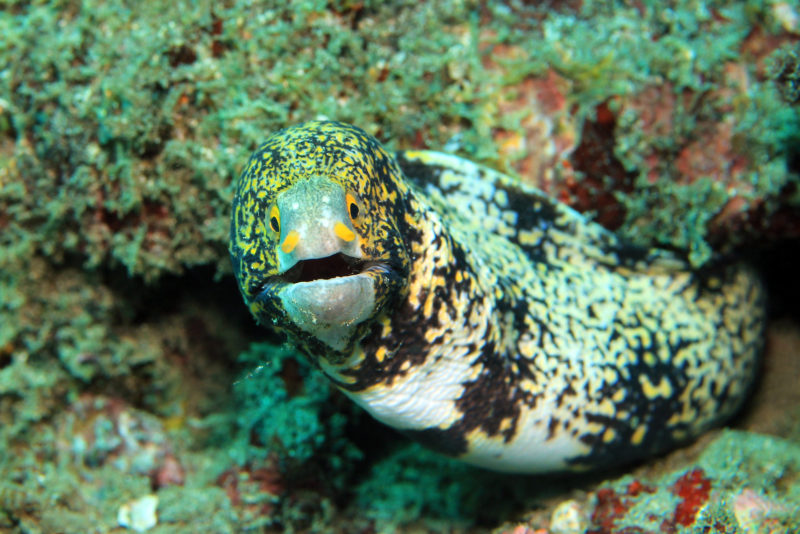
Snowflake moray
The snowflake moray inhabits oceans from Baja California to the Indo-Pacific. It lives between rocks and coral reefs, from shallow lagoons to depths of 30 feet (10 m). Snowflake morays feed predominantly on crustaceans, and their beautiful white-and-gold spotted skin makes them highly sought after by aquariums around the world.
The post Marine Species: Moray Eels appeared first on Scuba Diver Life.
from Scuba Diver Life http://ift.tt/2nha89q
Friday, January 26, 2018
The Hatchet Women Collection from Kristen Dorsey.
I’ve been meaning to show you Kristen Dorsey’s Hatchet Women collection for months.
I loved these designs immediately: the collection is bold, distinctive, unique, strong, and beautiful. But for some reason, I just couldn’t figure out what I wanted to say about it.
I’ve finally realized what my writer’s block was about.
The reason that the Hatchet Women Collection is so remarkable is its historical inspiration and designer Kristen Dorsey’s connection to that history: a history that I don’t share.
Continue reading The Hatchet Women Collection from Kristen Dorsey. at Diamonds in the Library.
from Diamonds in the Library http://ift.tt/2DFtWu1
How to Prevent Vertigo When Scuba Diving
Many of us have, at some point, experienced vertigo when scuba diving. A strange, spinning, tilting, nauseating sensation that while – in itself – isn’t dangerous, vertigo can lead to more worrying issues beneath the surface. It can also be a symptom of a more serious underlying medical issue. The PADI Open Water course briefly touches on vertigo when scuba diving, but it’s an often-overlooked safety concern. How can you prevent a bout of vertigo on your own dives?
What is vertigo, and what causes it?
Vertigo when scuba diving — a feeling of tilting and dizziness — is due to an imbalance in pressures within the left and right ears on either descent or, more commonly, ascent. Disorientation can also cause vertigo when the information your brain is receiving is dissonant to your view in the water. For example, when diving in either extremely good or extremely poor visibility, the brain can struggle to process the information presented. Disorientation and dizziness may result. Vertigo can also be a symptom of DCS, hypoxia or a contaminated air fill.
Outside of pressure variations between the two ears or mental triggers due to disorientation, the most common causes of vertigo are inner-ear infections. Diseases of the ear can also cause vertigo. Benign paroxysmal positional vertigo (BPPV), Meniere’s disease or vestibular neuritis are all possible underlying conditions. BPPV can sometimes manifest due to calcium build-up within the canals of the inner ear, causing periods of disequilibrium that may last between 20 seconds and one minute. If symptoms have presented for some time and particularly if they persist on land, consult your doctor.
Vertigo can be frightening underwater. The feeling that you’re not in control while diving can lead to anxiety and, if you lose control, potentially catastrophic consequences. Vertigo can also cause a diver to become distracted from the task at hand. Whether negotiating a wreck or drift diving in current, vertigo is something to be avoided.
Vertigo prevention
As with any scuba-related problem, prevention is better (and simpler) than cure. Here are a few tips to help prevent vertigo when scuba diving.
- Stay in good condition. Don’t dive when you’re unwell or suffering from a cold or congestion that may disrupt effective equalizing on descent and ascent through the water.
- Be honest on your diving medical form. If you’re diving and answering ‘yes’ to taking prescription medications (or have any other ‘yes’ answers), obtain your doctor’s clearance before diving. Undesirable and unknown side effects may reveal themselves as vertigo-like symptoms while you’re under pressure during a scuba dive.
- Do your buddy check. Take some breaths from your tank. Does the air taste okay? If the air has a ‘taste’ – particularly if it feels heavy or oily – you may have a bad air fill. Let the dive operator know immediately.
- Stay with your buddy in-water. If something goes awry you can steady each other while you regain control.
More methods of prevention
- Use descent/ascent lines when available, especially if you’re diving in low or extremely good visibility where disorientation may be an issue. For example, if you’re descending somewhere that there will be periods of no visual reference, a reference line is a gift. Descent/ascent lines offer a tactile connection and allow you to pause a descent or ascent if the dive is not going to plan. Even if you’re quite experienced, the line is still quite useful as a visual reference.
- Equalize air spaces regularly. Disequilibrium of air spaces can be a major factor in episodes of vertigo. Go back to basics. Equalize early and often and, if you’re wearing a hood, be sure that it’s not interfering with equalization. Pull the hood away from your head as needed during descent so that you can feel the gentle water movement around your ears.
- Find visual references to help your brain become oriented. If a descent/ascent line isn’t available, look for topography, anchor lines, other divers and static marine life. Anything that offers navigational clues to your senses will help prevent symptoms. Find something to focus on.
- Mount your depth gauge or computer somewhere that you can watch your depth and position each step of the way on descent and ascent. For example, if descending onto a wreck using a line, mounting the computer on the inside of your right wrist will help. This allows you to keep the line in your right hand throughout the descent and simultaneously monitor depth and position in the water column. This also leaves the left arm free for equalizing, signaling and adjusting buoyancy.
What to do if you experience vertigo
If, despite taking precautions, you experience symptoms of vertigo mid-water, there are a few steps you can take.
- Stop, breathe, think, act. Slow down. Let your brain get some oxygen. Symptoms may subside as quickly as they arrived. Pause and take stock of the situation.
- Check your depth. Look at your computer or depth gauge. Know where you are and, if possible, maintain position. If you’re struggling to maintain focus on the figures on your computer, look for the direction of bubbles to help determine where the surface is.
- Signal your buddy for help. Not sure what signal to use? Opt for a ‘problem’ (tilted hand) and ‘narcosis’ sign (twirled finger near the temple). If you’ve been diving correctly and your buddy is close, they should be able to steady you while you regain your faculties.
- Even if you feel nauseous, keep your regulator in your mouth. Resist the temptation to rush to the surface. The regulator can cope with the vomit — it will be simply expelled through the exhaust valves. But if you remove your regulator, there is a good chance your body will instinctively inhale after vomiting, leading you to inhale water.
- If symptoms don’t subside quickly, abort the dive. If symptoms are recurring or persist on land, consult your doctor. They may indicate an underlying medical problem.
Vertigo when scuba diving is a common but infrequently discussed experience. Be prepared. Know the symptoms and what you can do to both prevent it and deal with it if it happens to you.
The post How to Prevent Vertigo When Scuba Diving appeared first on Scuba Diver Life.
from Scuba Diver Life http://ift.tt/2DJ5wnu
Thursday, January 25, 2018
CME-GWS Collaboration saves time and money at remote replacement hospital
When renovations and updates just don’t cut it, a healthcare system may decide to build a replacement facility. It goes without saying that these projects can be some of the most challenging as they combine the elements of new construction with the logistics of relocation all of which must be accomplished with minimal disruption to patients and healthcare staff.
Fostering collaboration across the supply-chain can make these large-scale construction projects much more manageable saving time and money along the way. With CME’s equipment expertise and breadth of product lines and the project management prowess of Global Workplace Solutions (GWS) Healthcare services, one replacement hospital project was recently planned and executed seamlessly.
from CME Insiders http://ift.tt/2DCgOJX
Wednesday, January 24, 2018
The rose gold tiara of your celestial dreams.
Like any self-professed tiara enthusiast deserving of the title, I look at a lot of tiaras. I love many of them, even though I only own three (or maybe four?).
This rose gold tiara by JY Jewels is my favorite at the moment:
Isn’t it fantastic? Bold but still sophisticated, with a parade of rose gold-dipped stars.
We’ve talked about JY Jewels before (I own and love several of her gorgeous Éclat necklaces) but I do believe this is the first rose gold tiara we’ve admired here on DitL.
Continue reading The rose gold tiara of your celestial dreams. at Diamonds in the Library.
from Diamonds in the Library http://ift.tt/2n7m51R
Choosing the Right Surface Marker Buoy
A surface marker buoy (SMB) is an invaluable tool for any diver. An SMB shows boats that there are divers in the water and helps your own boat spot you as you ascend from a dive. Divers also use SMBs to note their position during a drift dive. There are many different types of surface marker buoy available, so what should you look for when buying one? Here are some of the most common features.
Types
The two main types of surface markers are the delayed surface marker buoy (DSMB) also known as the safety sausage, and the surface marker buoy (SMB). The DSMB is simply an inflatable tube that you send up to the surface from underwater as you begin your safety stop. This highlights your position in the water to boats and helps your own boat keep track of you. It can also act as a visual reference for you during your ascent.
You can inflate an SMB at the beginning of a drift dive and hold onto it during the dive so that your boat can easily follow along. This is a much more effective method for the boat driver than trying to follow your bubbles — not an easy task in even small waves.
Either type of surface marker also allows your spotter to see you far more easily if you drift a little farther from your boat. If you become lost, you can use your SMB as a signaling device to say that you need assistance by holding it horizontally above your head.
Open or closed
Open-ended DSMBs are open at the bottom. This makes them very easy to inflate and, at the end of the dive, it also allows you to deflate and store them easily. However, they tend to let in water once they reach the surface. This can make them flop into a horizontal position and create additional drag for you if you are swimming. You can reduce this effect by pulling on them to keep them upright, although it doesn’t completely stop water from getting in.
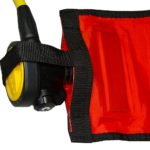

Closed DSMBs are sealed at the bottom. This means that you fill them completely with air so that they will stick upright in the water to be as visible as possible. But this also means that there’s only one method of putting air into them.
Inflation methods
On closed DSMBs, a one-way oral-inflation valve allows you to add air by blowing into it. This involves taking a breath and removing your regulator, then adding air orally into the DSMB before replacing your regulator. You may need to do this two or three times. Some models also allow you to partially insert the Low-Pressure Inflator (LPI) into the valve to add air more quickly. This is very handy for rebreather divers who don’t want to take their mouthpiece (loop) out of their mouths. It also allows you to add more air into the DSMB so that you know it will be full once it hits the surface. If you attach the DSMB to a spool, you can deploy it from deeper depths and take advantage of Boyle’s Law. As the DSMB ascends, the air inside it will expand to fill it up completely. This is standard practice for technical divers.
On open DSMBs, it’s common to use air from your exhalations to fill it from the bottom. Again, this allows the air to expand as it ascends to fill up the DSMB. Just be very careful that you don’t get any part of the DSMB or reel entangled on you or your equipment.
In warm waters, it’s common to fill your DSMB with the second-stage alternate regulator. This means you can add a lot of air quickly, but it’s not an appropriate method in cold-water environments. Especially in water close to 32 F (0 C), the risk of free-flow is very likely.
Size, shape and color
DSMBs come in numerous sizes. The largest can be 6.5 feet (2 m) or longer. Which size you choose will depend on where you go diving. If you dive in relatively calm seas with little current, then a smaller 3-foot (1 m) DSMB will suffice. But if you are likely to experience larger waves or whitecaps, then the larger the better. SMBs are often similarly shaped and sized to DSMBs, but they can also look more like a mooring buoy or a lift bag.
As for color, it’s important that your SMB contrasts highly against the color of the ocean. Standard surface markers should be red or orange. You should only use a yellow DSMB in an emergency. Reflective strips also make you easier to see on darker days and at dusk.
Attachment options
Since you deploy DSMBs from underwater, they come with different types of line. A basic nylon line around 18 feet (5.5 m) long comes with most DSMBs, which is around the same length as your safety stop is deep. This makes it easy to manage once you have deployed it, but it also means you must have it ready to deploy as soon as you reach your safety-stop depth. It is better to be able to warn boats that you’re there before you ascend to such shallow depths.
A great alternative is to attach the DSMB to a spool so that you can deploy it from 50 to 65 feet (15 to 20 m) deep. Then you have all the advantages — boats have plenty of warning; the air you put into it will expand, and you have a visual reference for your ascent.
When thinking of buying a surface marker buoy, talk to dive professional about the best one for you. They can also help you to learn safe and effective methods of deployment before you take one on a dive. No matter which kind you get, you’re safer underwater with an SMB.
The post Choosing the Right Surface Marker Buoy appeared first on Scuba Diver Life.
from Scuba Diver Life http://ift.tt/2E41S4j
Tuesday, January 23, 2018
Case Study: 360 video at Euronews
from World News Publishing Focus by WAN-IFRA - World Association of Newspapers and News Publishers http://ift.tt/2F4FPd9
Self-Care A-Z: Self-Care and PIE!
from The New Social Worker Online — the professional social work careers magazine http://ift.tt/2BjJQZb
Monday, January 22, 2018
12 reasons I’m excited for AGTA GemFair 2018!
Happy 2018, my darlings!! It’s late January, and you know what that means: time to get pumped for AGTA GemFair!
Why I can’t wait for AGTA GemFair 2018
From January 30th – February 4th, many of the US and Canada’s finest colored gemstone and pearl dealers will gather at the AGTA’s 2018 GemFair to offer their glimmering, shimmering, lustrous wares. The event is only open to members of the jewelry industry…but I’m going to share it all with you!
Continue reading 12 reasons I’m excited for AGTA GemFair 2018! at Diamonds in the Library.
from Diamonds in the Library http://ift.tt/2mZCHsi
Choosing an Undersuit for Your Drysuit
If you’re thinking of entering the world of drysuit diving, you may have noticed that there’s a lot to consider when it comes to getting the right suit for your diving needs. Choosing an undersuit for your drysuit is one such consideration. Buyers often don’t consider the undersuit until after they’ve purchased a drysuit, but you should devote some time to your choice — it can mean the difference between feeling snug and warm or cold and miserable on a dive.
Most drysuit manufacturers offer undersuits, but there is a wide range on the market: one-piece, two-piece, traditional duvet-like onesies, and skin-tight garments made of synthetic materials. How well they keep you warm is based on a combination of what they’re made of, how well they fit, their thickness, what kind of drysuit you’re wearing, the water temperature, and the duration of your dives. With that in mind, here are some tips on choosing an undersuit for your drysuit.
Material
Once upon a time, wool was the material of choice, as it’s a very good insulator and does a better job than most materials at trapping heat when wet. But wool is bulky and can be itchy. Modern undersuits tend to be made of Thinsulate, but aerogel is the new kid on the block. Nylon-lined polyester fabric is also popular, as is fleece. Each material is designed to trap as much air as possible. Your body warms up the air and the undersuit retains it so that it acts as an insulating layer.
A key advantage of Thinsulate and aerogel undersuits is their ability to wick moisture away from your skin. This prevents any moisture from taking heat away from your body, which it does faster than air. This moisture passes through the material so — in theory at least — sweating doesn’t mean that you’ll end up with a damp undersuit. Some suits utilize different materials on certain parts of the suit, based on which parts of the body lose heat faster. You can also use a neoprene wetsuit as an undersuit. These can keep you a little warmer should your drysuit flood, but they can make you sweaty on land. They can also restrict your movement when you combine them with a drysuit.
Thickness
The thickness of your undersuit will depend somewhat on the type of drysuit you’re wearing. Membrane drysuits are very thin and offer no thermal protection, relying entirely on the undersuit for warmth. Neoprene drysuits do offer some thermal protection, so you can go a little lighter with your undersuit.
Thinsulate and aerogel fabrics are very efficient at trapping heat, so they can be thinner than other materials yet have the same insulation properties. Polyester undersuits tend to be thicker, and are less efficient at removing moisture. Although a thicker undersuit won’t necessarily keep you warmer, adding additional layers will. But note that wearing more material will reduce your range of motion. This becomes important when you’re technical diving — reduced mobility may mean you struggle to reach the valves on a twinset. In very cold water you might want to wear a base layer with one or more undersuit layers on top. Just remember that each layer will progressively reduce your range of motion.
One-piece or two-piece
Ease of donning and removal, comfort, and range of motion all factor in here. One-piece undersuits are generally very easy to get into and out of. Some one-piece undersuits are skin-tight in order to trap heat effectively. Although they stretch a little to allow more freedom of movement, they can be a workout to get into and out of. They usually lose elasticity over time, which reduces their overall effectiveness.
Two-piece undersuits come in varying thicknesses, and you wear them just as you would your normal clothes. They can also be skin-tight if worn as a base layer. In very cold water you might prefer a skin-tight one-piece, with a thicker two-piece undersuit over it. The ability to add and remove layers depending on your comfort level is a key consideration.
Size
An undersuit must fit you properly to do its job. If it’s too small and tight, it’ll be difficult to take on and take off. It will wear out quicker and it won’t trap heat efficiently. Plus, it may compromise your range of motion. An undersuit that’s too big can keep the drysuit from fitting you properly, which will also reduce your range of motion. It’s best to have an undersuit that has some give, meaning that it’s not too large, but large enough to comfortably allow for additional base layers in colder waters.
Water temperature and dive duration
With temperatures close to zero degrees, and/or long dives, you’ll need either a membrane drysuit with lots of undersuit layers or a neoprene drysuit with fewer layers. Technical dives will usually be long and possibly deep, which may mean you’ll want a heated undersuit or vest. Even temperate water may have chilly thermoclines. No matter the water temperature, the longer the dive, the colder you’ll get.
Buoyancy changes
It’s not just your drysuit that’s buoyant — your undersuit’s thickness also factors into the equation. The thicker it is, the more weight you’ll need, because all that material is less dense than the water surrounding you. If you are correctly weighted and wear fewer layers than normal for a given dive, you’ll need to reduce your weight. Conversely, if you add a layer on top of what you would normally wear — even a thin top — you may need a few extra pounds.
The thickness of your undersuit also influences your ability to vent air from the drysuit outlet valve. The air must travel through the undersuit’s material, and more layers will slow it down. When you want to dump air, there will be more of a delay before it reaches the valve — just something to bear in mind.
Accessories
Accessory items tend to be very functional, so do consider them. The most common are thumb and leg loops. When you put the drysuit on, the loops prevent the undersuit material from riding up. Leg loops are particularly handy as it’s difficult to reach down into the inside of the drysuit to push the undersuit back down, and it’s frustrating to remove it to solve the problem. Thumb loops can also be useful, but you can also pinch the sleeves with your fingers when climbing into the arms of the drysuit. Then, let go before pushing through the wrist seals and your undersuit won’t ride up the arm. Some people find the loops quite annoying as they sometimes break the through the wrist seal, which you may only discover once in the water. Conversely, if you’re using dry gloves, you might want to push the loops through the seal so that air can migrate into the gloves and prevent a squeeze. Handy, but if the dry-glove seal fails, it will let water into your entire drysuit.
Another important, and often overlooked, feature (at least for men) is whether to choose an undersuit that has a suitable hole for routing a p-valve hose. It must be large enough for the hose to fit easily, and located in an appropriate place to allow good routing. If not, the hose can kink. This can lead to backpressure on the p-valve when you go to the bathroom, which can in turn mean a failure of the condom catheter with predictable results.
Undersuit cost
Quite simply, undersuit cost varies considerably. Manufacturers are always developing new materials and new undersuit lines. Depending on the brand and the technology, you may pay over $500 for one. But you can also get a decent new undersuit for between $200 and $300. Heated vests are another matter; they are always expensive and require a costly battery pack as well. Choose the battery-pack size carefully based on projected dive duration and temperature. Don’t dismiss the second-hand market either — you might get lucky with sizing and snap up a bargain.
As with all scuba equipment, talk to your buddies. Go in to dive shops and try on the goods. Do your research to find the proper suit for the kind of diving you intend to do for a price you’re willing to pay. A good undersuit will take care of you for a long time if you do the same for it.
The post Choosing an Undersuit for Your Drysuit appeared first on Scuba Diver Life.
from Scuba Diver Life http://ift.tt/2BjqzXG
Sunday, January 21, 2018
Fall in ♥ with February

Valentine’s Day is the one day of the year that everyone is expressing their love to the most precious people in their lives - making it the second most popular holiday for retail sales. As a beauty business owner you know that beauty, hair, and spa services and retail make the perfect gifts. When planned and promoted right, the additional dollars will make you fall in love with February.
Tips To maximize your Valentine’s Day Sales
N°1. Show Some Merchandising Love
Don’t limit your Valentine's Day promotions to only your salon “retail area” or space. There are plenty of additional places in the salon to promote products and services. Determine a "Valentines Look" for your salon or spa. Decorate to add some love to your business in your special branded way.
N°2. Set Up Valentine-Themed Windows
Your salon windows are your most valuable advertising space. Valentine's Day merchandising should be prominently showcased in the display window that faces the street. Don’t underestimate the power of talking to the street. Pick a theme, be bold. Then choose decorations and retail products that tell a story. Theme everything to your story – from your color to your merchandise.
N°3. Indulgence Packages
Valentine’s Day is about treating someone. In addition to offering gift certificates for dollar amounts, consider putting together special combination packages. When people receive a gift certificate for a dollar amount, they tend to use it for services they normally receive at the salon. Instead, put together beauty and pamper packages that make the recipient feel treated. This strategy works for female and male gifts - in addition to packages for women offer grooming packages that a boyfriend or husband will enjoy.
Tip: It is more profitable to sell “luxury service" packages to expose clients to new services they have never tried, and could continue. Packages are also a great opportunity to sell service combinations, each service added to a package increases the value to the client.
N°4. Product Bundles
Put together hair care products to sell as gifts. Just think about who is buying the bundle, and whom they are buying it for. Don't put customers off by offering complicated bundles. Keep it simple. When offering product bundles, display and create attractive packages that are “ready-to-gift”. Make product bundles more attractive by pre-packaging them in simple open-top gift boxes, gift bags, tissue, and beautiful ribbon.
N°5. Attractive Gift Cards
Offering a monetary value to redeem against your services is a fantastic option for indecisive customers. If you are providing gift cards make sure it includes an attractive gift card presentation that is professionally designed and printed. This should be of high quality and reflect your salon brand.
For larger gift card purchases a branded box is even more fitting, it is much more exciting to discover a gift card nestling inside a pretty box then just a dreary certificate printed on cheap paper. So many hair and beauty salons present cheap-looking gift cards which proudly boast $75 on them. If a guest is spending $75 + on a present - it needs to look and feel special!
N°6. Electrical Products
Hair straighteners, dryers and other electrical goods make great gifts. Make sure you put pretty pink or red ribbon around stocked boxed goods - they move faster and are immediately perceived as gift ideas.
N°7. Joint Offers
Work with appropriate local business connections, like restaurants or florists, to come up with joint Valentine's Day offers. This strategy requires more coordinating, but when done right can make your promotion stand out.
N°8. Promote Your Valentine's Day Packages or Special Offers
Decided your offers? Now it's time to promote across all channels to get as much exposure as possible. The premise is a simple one; the more people that are aware of your package, the more you are going sell. To take full advantage of the Valentine's Day holiday begin promoting 4 weeks before the 14th (January 14th at the earliest).
N°9. Turn Gift Card Guests into Loyal Clients
Gift card promotions give salon owners the opportunity to turn a “gift card guest” into a repeat and loyal client. A solid first impression with their Valentine’s Day experience will make them more likely to return.
There are 3 other ways to turn Valentine’s guests into loyal clients:
1. Ask each gift card guest to fill out a client card to allow future correspondence.
2. Treat each gift card guest like a VIP.
3. Re-book gift card guest for a follow-up service at end of experience.
N°10. Hire a Professional
Need a Valentine's Day promotion and haven't planned it out yet? Let BeautyMark help maximize your Valentine’s Day returns. Start promoting your Valentine's Day offers with gorgeous and professional design. Check out BeautyMark's pre-made email campaigns, social media graphic posts and website banners. Don't miss out on another revenue-generating holiday opportunity.
Visit here to learn more about our pre-made Valentine's Day promotions.



from Beauty Business Blog http://ift.tt/2EYxk3l
Top Five Places to Dive with Grey Nurse Sharks in NSW Australia
There’s nothing better than a dive with grey nurse sharks and, in New South Wales, nothing safer. The local shark is the grey nurse shark (Carcharius taurus), also called a sand-tiger or ragged-tooth shark. Although they look fearsome, they pose no threat to divers. They grow to about 9 feet (3 m) and though it looks fierce there are no reported incidents of grey nurse sharks harming divers – or humans for that matter.
Grey nurse sharks often aggregate in NSW in numbers from a handful to a few hundred, in well-known sites, and usually around small islands not too far from shore. They swim very slowly during the day as well, in depths accessible even to new Open Water divers, which makes it easy to observe and photograph them. Here are our picks for the most popular sites to see grey nurse sharks in NSW.
Magic Point, Sydney
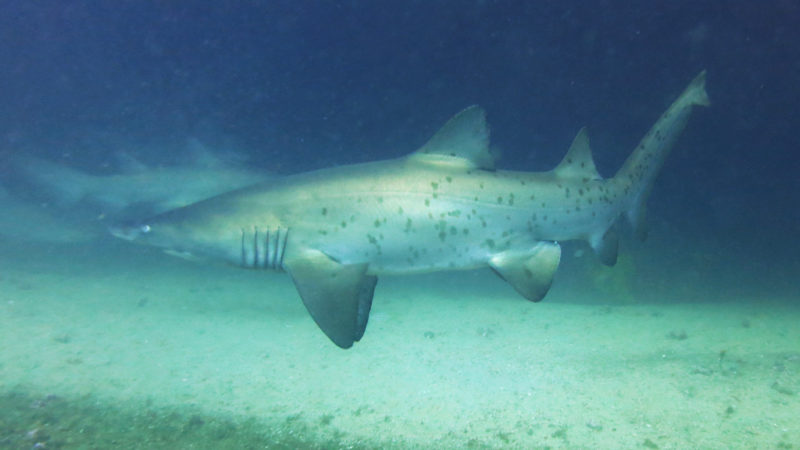
Magic Point is the only known site around Sydney where grey nurse sharks regularly aggregate, though in quite small numbers. While the site is off just the headland south of Maroubra Bay, it is only accessible via boat. The sharks aggregate near two small caves about 15 feet (5 m) high at the 60-foot (20 m) mark.
Many Sydney operators include Magic Point on their weekly itinerary, however the sharks are not always there. Divers can sometimes outnumber the sharks.
Top Tip: Go with a small group of more experienced divers if you can.
Broughton Island, Port Stephens

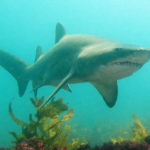
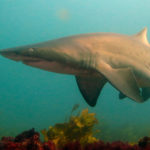
Broughton Island is a small island and collection of rocks northeast of the entrance to Port Stephens, a two-hour drive from Sydney. Accessible only by boat, it is about 50 minutes from Nelson Bay Marina. There are a number of excellent dive sites, and two in particular are noted for shark encounters.
Probably the best known is North Rock, a site enclosed by large rocks and walls. North Rock forms a natural aquarium, with many vantage points to sit quietly and watch the grey nurse sharks cruise slowly past. Even without the grey nurse, these are still impressive dive sites.
The other, and certainly the one that leaves the biggest impression, is Looking Glass — a crack that runs right through one of the smaller islands. This spectacular site features a natural shark aquarium with stunningly atmospheric lighting from the vertical shafts of light.
Seal Rocks, Forster Tuncurry
Seal Rocks, roughly three-and-a-half hours’ drive from Sydney, almost certainly has the largest aggregations of grey nurse sharks in NSW. There are four different sites around Seal Rocks varying in depth from 30 to 120 feet (10 to 40-plus m). You must have a bit of experience under your weight-belt and ideally some recent deep dive experience to visit.
The absolute best time to see grey nurse sharks is around June, when the site is a favorite of the dive centers in Forster. Bait Grounds is another, more accessible site just off Forster Beach. Here you can sometimes find grey nurse sharks (particularly early in the morning) in just 27 feet (9 m) of water. It’s about 500 feet (150 m) off the beach, so it’s possible to do as a shore dive.
Fish Rock/Shark Gutters, South West Rocks
Further north, South West Rocks a five-hour drive from Sydney. This well-known dive is more famous for the cave than grey nurse sharks, but one I’ve never dived without encountering sharks. Often the first dive is through the cave from the lower rear entrance. Coming out into the Aquarium, early-morning divers will likely see a dozen or so grey nurse milling around.
Later in the day, you’ll find grey nurse sharks “around the back” at the end of Colorado Run. You’ll also see wobbegong sharks, rays and numbfish; even the occasional hammerhead makes an appearance.
Fish Rock is only accessible via boat, and Fish Rock Cave is rated as of Australia’s Top 10 Dive Sites — sharks or no sharks.
Grey Nurse Gutters, South Solitaries, Coffs Harbor
The South Solitary Islands are an uninhabited collection of small islands and rocks northeast of Coffs Harbor, six hours’ drive from Sydney. The islands are 40 minutes off shore. Here, you’ll find a dive site aptly called Grey Nurse Gutters. With a bottom around 60 feet (18 m) and typically great visibility, it is another good place to see grey nurse sharks.
Like the other sites mentioned here, if the sharks aren’t around the day you visit, or weather does not permit you to get to the northern end, there are a dozen other great dive sites that will make the trip to the South Solitaries more than worthwhile.
Shark etiquette
When diving with sharks, it’s important to dive responsibly and ensure you don’t spook them.
- Do not block a shark’s movement — ensure you are not in the direction that they are obviously going.
- Do not block their exit, especially if they are inside a cave or under an overhang
- Do not descend on top of sharks
- Do not get close to sharks as this is ultimately self-defeating. A shark will move away from any diver that attempts to approach, possibly permanently.
To get the best of your time with sharks, try to stay in one spot for a while. Stay on eye-level with the shark, i.e., at the same depth, and control your buoyancy and breathing. They don’t like lots of bubbles.
By guest author Deborah Dickson-Smith
The post Top Five Places to Dive with Grey Nurse Sharks in NSW Australia appeared first on Scuba Diver Life.
from Scuba Diver Life http://ift.tt/2G0DjWJ



